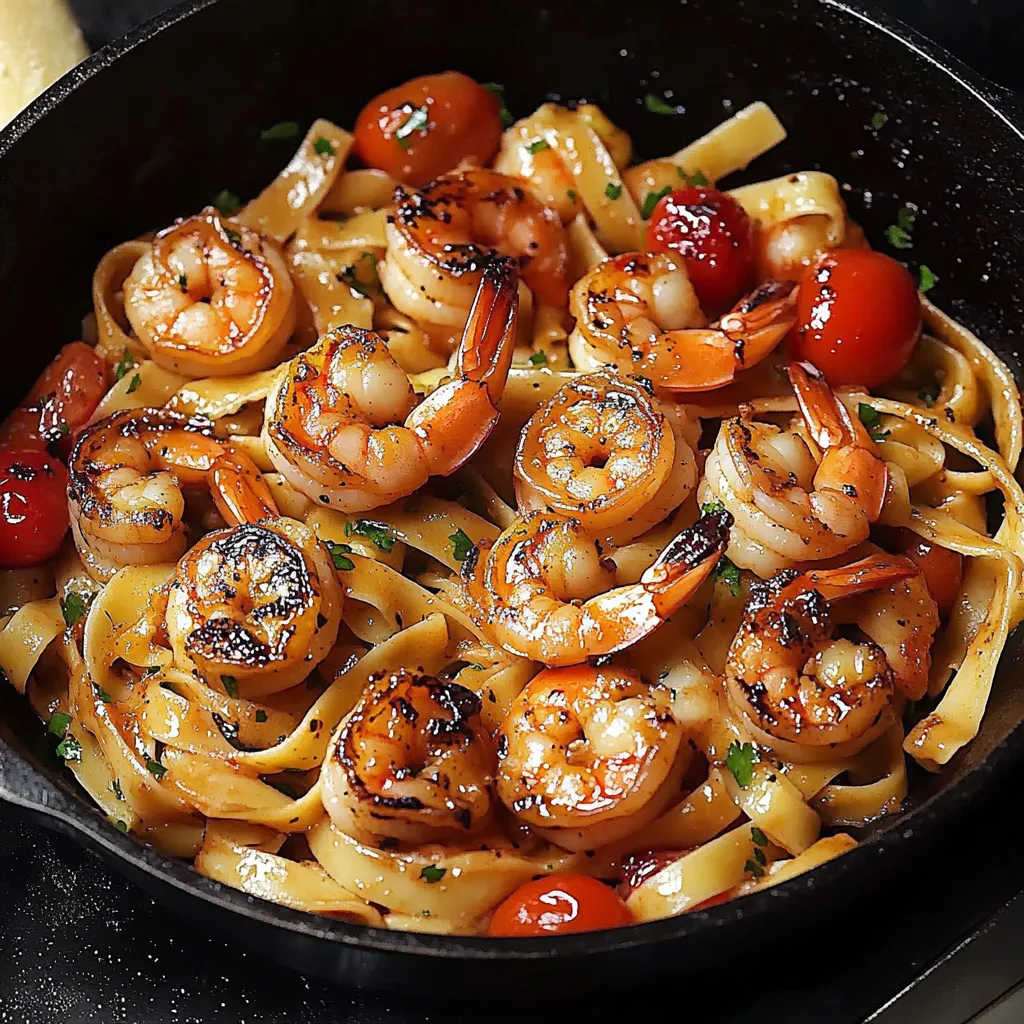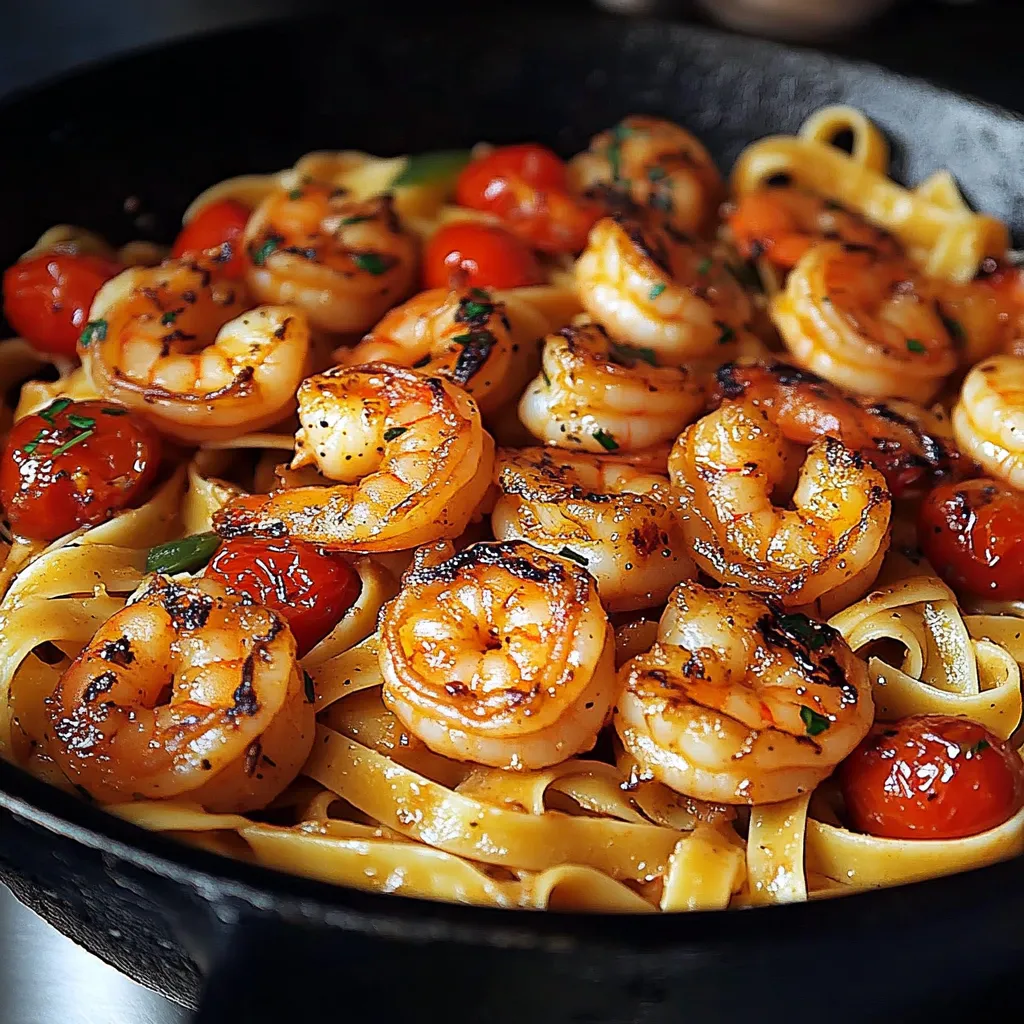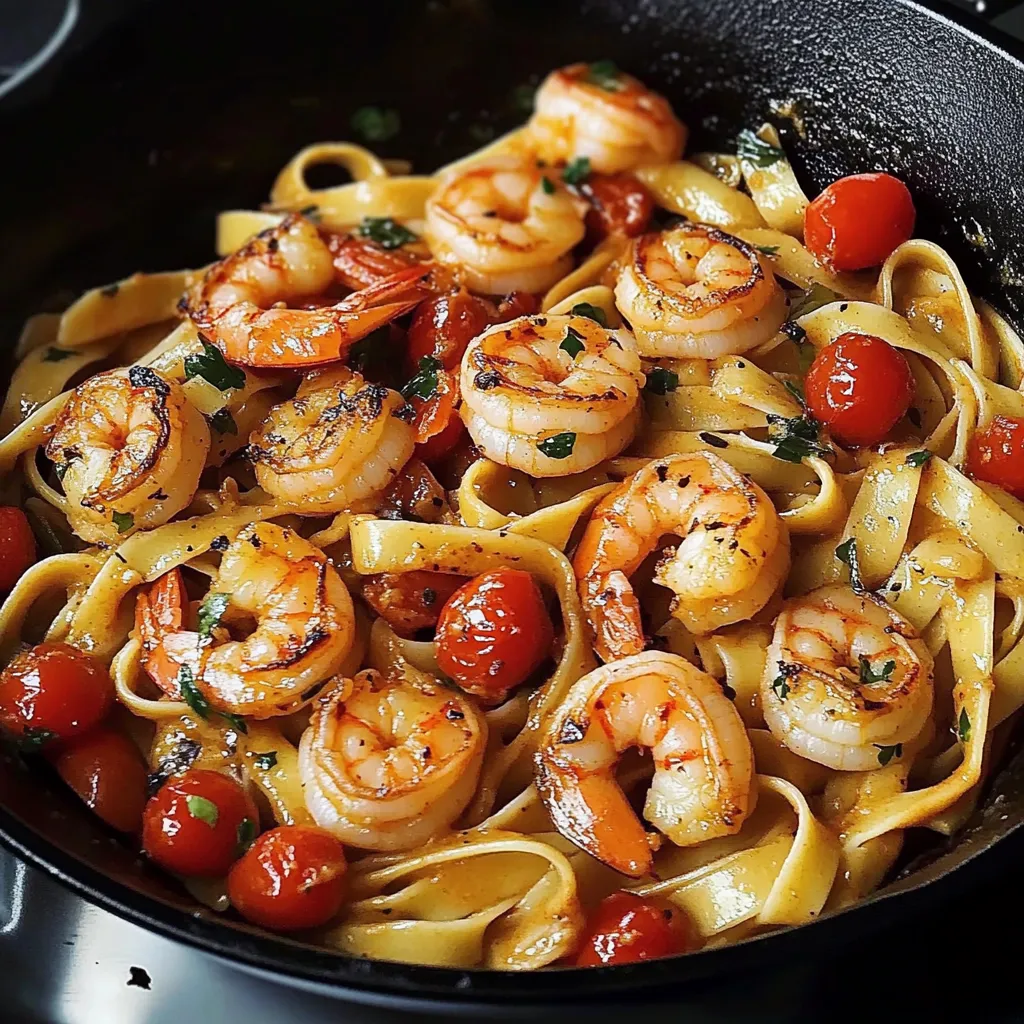 Save
Save
Jerk shrimp fettuccine combines the bold, spicy flavors of Caribbean cuisine with the creamy comfort of Italian pasta, creating an exciting fusion dish that awakens every taste bud. This recipe transforms ordinary weeknight ingredients into something extraordinary by coating tender shrimp in aromatic jerk spices, then nestling them in silky Parmesan cream sauce with perfectly cooked fettuccine. The result is a restaurant-quality meal that delivers both heat and comfort in every single bite.
I first created this dish when craving something that combined my love for spicy Caribbean flavors with comforting Italian pasta. The magic happens when the jerk-spiced shrimp meets the cooling cream sauce, creating this incredible balance that's both exciting and satisfying. My dinner guests consistently ask for the recipe, amazed that something so complex-tasting comes together so quickly and easily.
Premium Ingredient Guide
- Fresh fettuccine pasta (8 ounces): Choose high-quality dried pasta or fresh if available; the wide, flat noodles hold the creamy sauce perfectly
- Large shrimp (1 pound, 16-20 count): Select wild-caught when possible for superior flavor and firm texture; avoid pre-cooked varieties
- Quality jerk seasoning (2 tablespoons): Look for blends containing allspice, thyme, scotch bonnet peppers, and garlic for authentic Caribbean flavor
- Extra virgin olive oil (2 tablespoons): Provides cooking medium and subtle fruity notes that complement both spices and cream
- Fresh bell pepper (1 medium): Choose red or yellow for sweetness that balances the jerk spice heat; green peppers work but are more bitter
- Sweet yellow onion (1 small): Adds natural sweetness and aromatic base that mellows the bold jerk flavors
- Fresh garlic cloves (2 large): Essential aromatic component that bridges the Caribbean and Italian flavor profiles
- Heavy whipping cream (1 cup): Creates the luxurious sauce base; don't substitute with lighter creams which may curdle
- Freshly grated Parmesan cheese (1/2 cup): Use authentic Parmigiano-Reggiano for best flavor and melting properties
- Sea salt and freshly ground black pepper: For seasoning adjustment; taste throughout cooking process
- Fresh flat-leaf parsley: Provides color contrast and fresh herb brightness that cuts through rich sauce
Perfect Cooking Method
- Preparing Pasta Foundation
- Bring a large pot of salted water to rolling boil and cook fettuccine according to package directions until al dente, usually 8-10 minutes for dried pasta. The water should taste like mild seawater to properly season the pasta from within. Reserve one cup of starchy pasta cooking water before draining, as this liquid gold helps bind the sauce to the noodles beautifully.
- Seasoning Shrimp Properly
- Pat shrimp completely dry with paper towels to ensure proper searing and spice adherence. Toss shrimp with jerk seasoning in a large bowl, using your hands to massage the spices evenly onto every surface. Allow the seasoned shrimp to rest for 5-10 minutes at room temperature, which helps the flavors penetrate while the shrimp comes to optimal cooking temperature.
- Achieving Perfect Sear
- Heat olive oil in a large, heavy-bottomed skillet over medium-high heat until it shimmers and moves freely around the pan. Add seasoned shrimp in a single layer, avoiding overcrowding which causes steaming rather than searing. Cook without moving for 2-3 minutes until the bottom develops golden-brown color, then flip and cook another 1-2 minutes until just opaque throughout.
- Building Aromatic Base
- Remove cooked shrimp to a clean plate and reduce heat to medium. Add sliced bell pepper and onion to the same skillet, using the flavorful oil and browned bits left from the shrimp. Sauté for 4-5 minutes until vegetables soften and become fragrant, then add minced garlic and cook for another 30 seconds until aromatic but not browned.
- Creating Silky Sauce
- Reduce heat to low and slowly pour in heavy cream, stirring constantly to prevent curdling or scorching. The cream should warm gently and begin to simmer very lightly around the edges. Gradually whisk in grated Parmesan cheese, allowing each addition to melt completely before adding more, creating a smooth, velvety sauce consistency.
- Final Assembly
- Add drained fettuccine to the skillet with the cream sauce, using tongs to toss and coat every strand thoroughly. If the sauce seems too thick, add reserved pasta water one tablespoon at a time until you achieve silky consistency that clings to the noodles. Return seasoned shrimp to the skillet and toss gently to warm through and distribute evenly.
 Save
Save
Through countless iterations of this recipe, I've learned that the key to success lies in balancing the bold jerk spices with the cooling cream sauce. Too much seasoning overwhelms the dish, while too little makes it bland. The vegetables provide crucial sweetness that bridges these contrasting elements, creating harmony rather than competition between the Caribbean and Italian components.
Spice Level Customization
Adjust the heat level to suit your family's preferences by controlling both the amount and type of jerk seasoning used. For milder versions, use only one tablespoon of seasoning and choose blends that emphasize herbs and spices over hot peppers. Medium heat lovers can stick with the recipe as written, while spice enthusiasts can increase to three tablespoons or add fresh minced scotch bonnet or habanero peppers.
Creative Variations
Transform this base recipe by incorporating additional vegetables that complement both the jerk spices and cream sauce beautifully. Diced tomatoes add acidity that balances richness, while corn kernels provide sweetness and textural interest. Sliced mushrooms absorb the flavors wonderfully and add earthy depth to the overall dish.
Serving Presentation
Serve this vibrant dish in warmed bowls to maintain optimal temperature and prevent the cream sauce from congealing. The contrast between the golden pasta, pink shrimp, and colorful vegetables creates stunning visual appeal that's perfect for entertaining or special family dinners.
Storage Solutions
Store leftover pasta in airtight containers in the refrigerator for up to two days, keeping in mind that cream-based sauces are best consumed fresh for optimal texture and safety. The pasta will absorb some sauce during storage, which is normal and actually intensifies the flavors.
Heat Management
Understanding proper temperature control throughout the cooking process ensures perfect results every time. The initial shrimp searing requires medium-high heat for proper caramelization, while the cream sauce needs gentle, low heat to prevent curdling or scorching.
 Save
Save
This jerk shrimp fettuccine has become my signature dish for impressing guests while still being approachable enough for regular family dinners. The fusion of Caribbean heat with Italian comfort creates something truly special that satisfies multiple craving types simultaneously. Every time I make it, I'm amazed at how well these seemingly disparate flavor profiles work together, proving that the best recipes often come from bold experimentation and willingness to combine unexpected elements.
Common Questions About Cooking
- → Can I make my own jerk seasoning?
- Yes! Mix together paprika, cayenne, thyme, garlic powder, onion powder, allspice, cinnamon, nutmeg, and brown sugar. Adjust spice levels to your taste preference.
- → How spicy is this dish?
- The spice level depends on your jerk seasoning. Most store-bought versions are moderately spicy. Start with less seasoning if you're sensitive to heat, or add more for extra kick.
- → Can I use a different type of pasta?
- Absolutely! Penne, linguine, or even rigatoni work well. The creamy sauce clings nicely to most pasta shapes, so use whatever you have on hand.
- → What can I substitute for heavy cream?
- Half-and-half works for a lighter version, though the sauce will be thinner. For dairy-free, try full-fat coconut milk, but the flavor will be different and slightly sweet.
- → Can I add other vegetables?
- Yes! Zucchini, mushrooms, cherry tomatoes, or spinach all work wonderfully. Add harder vegetables with the peppers and onions, softer ones at the very end.
